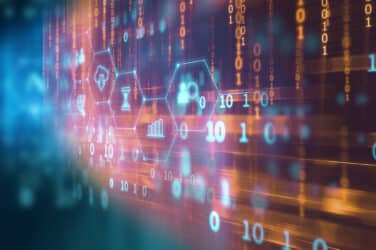
Distributed Ledger Technology (DLT) will bring significant efficiencies to global derivatives markets, but it is not a panacea for all processes, a new report by Acuiti has found.
DLT in Derivatives: Crypto innovation, traditional technology and the market of tomorrow, which was produced in partnership with ION, surveyed or interviewed senior executives at 87 firms from across the crypto native and traditional derivatives market.
The report asks what the future holds for derivatives market structure as innovations and processes developed in native crypto derivatives markets merge with traditional workflows. Participants in the study predicted that DLT will bring major efficiencies to trade settlement, trade reconciliation and custody.
In addition, respondents believed that the near real-time settlement and risk management that are features of native crypto derivatives market structure would be incorporated into traditional markets.
However, while DLT, or blockchain technology, brings significant efficiencies in certain areas by providing a real-time single source of data for trade, it is not suitable for all processes. In addition, participants in the study believed that certain functions of native crypto market structure, such as auto-deleveraging of positions and sell-side disintermediation of finance, would not become part of traditional market structure.
“The two worlds of crypto-native and traditional finance are currently largely bifurcated owing to a lack of regulatory clarity which prevents significant intermediation from traditional sell-side firms,” says Will Mitting, founder of Acuiti.
“This has forced native markets to innovate and develop new processes and workflows. While some of these innovations, such as harnessing the revolutionary potential of DLT, are likely to become key elements of market structure in traditional finance, the coming together of the two worlds will also see many elements of traditional market structure incorporated into native markets.
“This report explores how the development of regulatory frameworks for trading digital assets and adopting new workflows and market structure will bring the two market structures together to create new and common processes.”
In addition to how DLT and native crypto market innovations will impact traditional markets, the report also analyses how the ambitions of crypto native exchanges in traditional markets will lead to an increasing adoption of traditional technology among these firms.
Currently, the preference for most native crypto exchanges has been to develop technology inhouse or from crypto native third-party vendors. However, as the survey finds, many native exchanges are seeking to expand their offerings into traditional asset classes and services such as securities lending and traditional custody.
“This expansion into traditional assets classes and offerings is likely to be a key theme of the next phase of evolution of native crypto exchanges as they seek to diversify revenues and grow their customer base,” says Will Mitting. “The timeframe for expansion is, however, likely to be tight as regulatory frameworks are established.
“We expect these firms, therefore, to look to traditional vendors to work with them on areas such as risk management where the costs, timeframe and complexity of building inhouse are high.”
To download the full report visit https://iongroup.com/
Source: Acuiti






